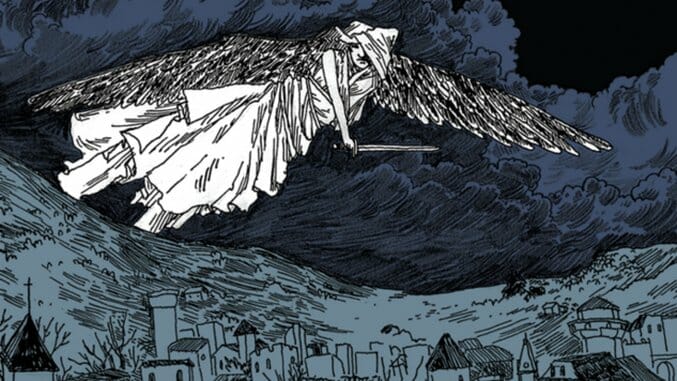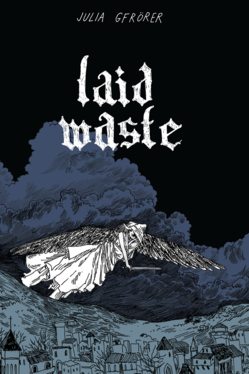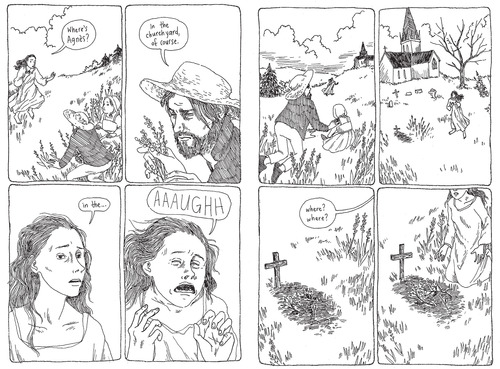Julia Gfrörer’s Laid Waste Raises a Hand From the Darkness
Art by Julia Gfrörer
Writer/Artist: Julia Gfrörer
Publisher: Fantagraphics
Release Date: November 1, 2016
 One has to assume that Fantagraphics timed the release of Julia Gfrörer’s latest book to coincide with Halloween or the approach of winter, but its presence in our lives at this moment speaks to nothing so much as the horror of regression. Set in the plague years of the medieval era, the story is minimal; Gfrörer focuses on atmosphere more than sparkling dialogue or clever plot twists. In fact, her plots are often the opposite of twisty. They follow a terrifyingly linear structure, which can sometimes be the point: death, fear and the things that lurk in the dark don’t necessarily need to be witty. They have strength and inevitability on their side. It’s not a very glass-half-full view of the world, even if she does make room for love and familial ties.
One has to assume that Fantagraphics timed the release of Julia Gfrörer’s latest book to coincide with Halloween or the approach of winter, but its presence in our lives at this moment speaks to nothing so much as the horror of regression. Set in the plague years of the medieval era, the story is minimal; Gfrörer focuses on atmosphere more than sparkling dialogue or clever plot twists. In fact, her plots are often the opposite of twisty. They follow a terrifyingly linear structure, which can sometimes be the point: death, fear and the things that lurk in the dark don’t necessarily need to be witty. They have strength and inevitability on their side. It’s not a very glass-half-full view of the world, even if she does make room for love and familial ties.

